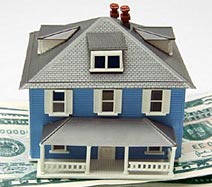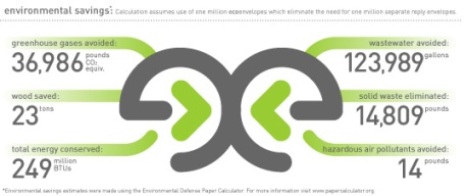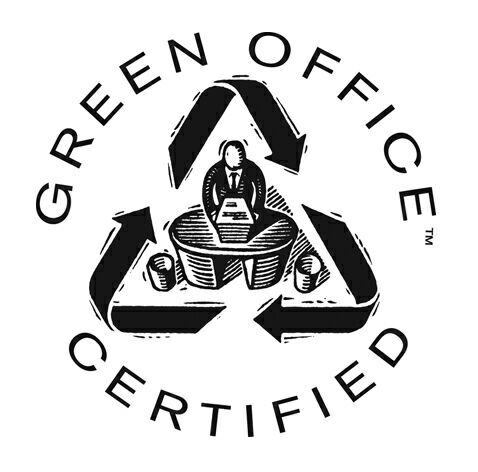
Owning a home tops the dream list for most Americans, and for plenty of good reasons. It’s a shelter for your family, a gathering place for your friends and a good long-term investment.
Tax breaks are also frequently cited as motivation for moving from renting to owning, and there are many ways a home can cut your tax bill.
But, as is often the case with the U.S. tax code, homeownership tax benefits are not always clear-cut. That frequently leads to some bad information floating around.
While myths, half-truths and misconceptions may abound, Bankrate.com has narrowed it down to five that, if you buy into them, could cost you.
1. My mortgage interest will reduce my tax bill.
This is true for the majority of homeowners, but not for all. And this tax break won’t work forever.
To take tax advantage of your home loan’s interest, you must itemize and come up with a total that exceeds your standard amount. On 2007 tax returns, the standard deductions are $5,350 for single taxpayers, $7,850 for head of household filers and $10,700 for married couples who file jointly. These amounts increase a bit each year to account for inflation.
“Given home prices these days, most owners are itemizing,” says Mark Luscombe, principal tax analyst with CCH of Riverwoods, Ill. By the time they count mortgage interest, property taxes and other nonhome deductions, such as state taxes and charitable gifts, their itemized totals easily surpass their allowable standard deductions.
But most is not all.
Taxpayers who buy a home late in the year, for instance, might find the standard deduction is more beneficial, at least initially, says Kathy Tollaksen, a CPA at Sikich in Aurora, Ill. In these cases, where you make only a few payments in a tax year, depending on your loan you might not pay much interest, at least not enough to exceed standard amounts.
Timing also could reduce or eliminate other home-related tax breaks.
“Quite a few states have real-estate taxes that are calculated in arrears. That is, they have already been paid or mostly paid (by the seller) by the time you buy,” says Tollaksen. “In the first year, you’re seeing taxes that are someone else’s responsibility so you’re not getting the full tax value of your real-estate taxes.”
The benefit of mortgage interest also could be a myth if you’ve lived in your home for a long time. In this case, you likely are paying more toward your loan’s principal instead of interest. So homeowners at the end of a loan term don’t get much, if any, from this tax break.
Or, as Bob D. Scharin, senior tax analyst and editor of Warren, Gorham & Lamont/RIA’s monthly tax journal “Practical Tax Strategies,” puts it, “Every deductible expense you incur may not produce a deduction.”
2. All costs related to my home are deductible.
There are no two ways about this one. It’s flat-out false.
“Some buyers think, hope, they can write off everything connected with the house,” says Tollaksen. “Not so. Association fees and property-insurance costs are not deductible.”
Neither, in most cases, is private mortgage insurance, which your lender probably required if your down payment was less than 20%. However, a new law changes the deductibility of PMI for mortgages originated or refinanced between Jan. 1, 2007, and Dec. 31, 2009.
If you got your mortgage and policy in that time frame, you might be able to deduct your insurance-premium payments. The law also extends beyond private insurance to others, including FHA, VA and rural housing.
There are some limits, though. The PMI deduction is phased out for taxpayers with adjusted gross incomes exceeding $100,000 and is totally eliminated once adjusted gross income reaches $110,000.
Don’t try to deduct basic maintenance, repair or home-improvement costs either.
Tollaksen says, “I’ve had people say, ‘I put a new roof on my home; can I deduct that?’ No.”
If you try to write off these expenses, expect to hear from the Internal Revenue Service and to pay a higher tax bill (and possible penalties and interest) after you refigure your taxes without the disallowed deductions.
However, you still need to keep track of these expenses.
“If you convert the home to rental property or sell it,” she says, “these costs will affect the property’s tax basis.”
A home’s basis is critical when it comes time to sell. And selling is also a tax area in which many people fall for myth No. 3.
3. I must use money from my home sale to buy another residence.
This used to be the only way to get around a tax bill on a home sale. Even then, you were only able to defer taxes by purchasing a new residence of equal or greater value with the profits from your other house. When you sold your final house, you’d owe those long-deferred taxes you had rolled over throughout the years. Home sellers age 55 or older were allowed a once-in-a-lifetime tax exemption of up to $125,000 in sale profit.
But on May 7, 1997, home-sale tax law changed. Still, a decade later, many homeowners are confused about the tax implications of selling.
“I recently heard some neighbors talking about having to buy another house when they sell to avoid the taxes,” says Scharin. “If the last time you sold the house was before 1997, you’re thinking of those old rules.”
Don’t worry. Most taxpayers still get a nice break. Now, if you live in the house for two of the five years before you sell, the IRS won’t collect tax on sale profit of up to $250,000 if you’re single or $500,000 if you and your spouse file a joint return.
“The law change has really affected people’s behavior,” says Luscombe. “Before, it didn’t really matter much whether you sold frequently or held onto your home for a long term. You basically could roll over the gain into a larger home and people could avoid tax until they sold for the final time without putting it into a replacement home.
“Now the law rewards people who sell frequently. In this current market, people who sell every couple of years can get and keep their gain,” Luscombe says. “But people who buy and hold might find they have reached the point where the gain exceeds the exclusion.”
That means they face unexpectedly high tax bills, even at the lower 15% capital-gains rate. The profit could also push them into a higher overall tax bracket, meaning they would make too much to claim some deductions, credits or exemptions. They also might even end up owing alternative minimum tax.
Another problematic consequence, says Luscombe, is that when the new rules took effect, people basically quit keeping records related to their homes.
“They thought: Since we’re never going to be taxed on the sale, there’s no need to keep track of what we paid and what improvements we made,” he says. The improvements add to your home’s basis, which you subtract from the sale price to determine your profit and whether any of it is taxable.
“Now with inflation in the housing market, a lot of people are selling homes in excess of the gains without any way to show that their tax bill should be less,” says Luscombe.
4. Putting my child on my home’s title is a smart tax move.
Worries about taxes on a residence sometimes lead homeowners to fall for this myth. It’s a particularly tricky one, because it combines confusion about residential taxes with the even more complex estate-tax area.
“Sometimes we’ll hear about taxpayers who, in doing some quick back-of-the-envelope estate planning, decide to put their home in the children’s names,” says Tollaksen. “The thinking is: My son or daughter won’t have to worry about this when I die.”
The goals: Avoid probate, keep the home in the family and get the property out of the parent’s estate for those tax purposes. Such a move, however, could produce other tax problems for your children.
Unless the child moves into the newly deeded house with the parent and lives there long enough (two of the previous five years) to make the house the child’s main residence, too, says Tollaksen, the son or daughter won’t get the $250,000 or $500,000 residential tax break when the child later decides to sell. Without establishing primary residency in the house, either before or after the parent passes away, the child’s ownership is viewed as an investment property.
Other parents opt to simply add a child’s name along with theirs on the title to the house, known legally as a joint tenancy. It doesn’t mean that all the owners live in the home, but simply that two or more people hold title to the property.
This, too, can produce tax complications.
Generally, when someone inherits a property, its value is stepped up. That means when the owner dies, the property becomes worth its fair market value that day.
But if the child co-owns the property with his parent, the child doesn’t get to fully use stepped-up basis. Tax law considers the addition of the child’s name to the title as a gift. And, along with that half of the home, the child receives half the basis that his or her parent has in the property.
This is known as the property’s carry-over basis. And it could be costly.
Consider, for example, that you bought your house many years ago and your basis in the property is $50,000. You add your daughter to the title. When you die, she inherits your half of the home, which by then is worth $250,000. A buyer offers $300,000 for the home.
Pretty good deal, right? From a real-estate perspective, yes. But not when it comes to your daughter’s tax bill on the sale.
Rather than owing taxes on just $50,000 more than the house’s stepped-up market value, your daughter will owe on three times that amount. Here’s the math:
| Parent owns home with a basis of: |
$50,000 |
| Parent adds child to title, “giving” child carry-over basis of: |
$25,000 |
| At parent’s death, house is worth $250,000, producing on the inherited half a stepped-up basis of: |
$125,000 |
| Home subsequently sells for: |
$300,000 |
| Child’s total adjusted basis (line 2 plus line 3) is: |
$150,000 |
| Taxes due on sale profit (line 4 sale price less line 5 basis) of: |
$150,000 |
What had been done with the best parental intention turned out to carry a big price because of this homeownership tax myth.
5. If I take a capital loss when I sell my home, I can write it off.
This myth, like No. 2, was probably started by wishful homeowners. Sorry, it’s just as wrong.
It is true that real estate, like any other asset, has the potential to go down as well as up in value. But unlike most of those other holdings, you cannot write off any loss you suffer if you must sell your main residence for less than what you paid.
That’s because your residence, under tax law, is considered personal property.
“When you sell your home for a loss, it’s not like other capital items,” says Scharin. “You don’t get to deduct personal property that you sell for a loss.”
“It’s the same as any personal property that declines in value,” says Luscombe, “like that old TV you sold to the neighbor kid so he could take it to college. You sold it for much less than you paid, but you can’t take a loss.”
You do, however, have to pay tax on gains you make when selling personal property.
But at least you now know the difference between fact and fiction when it comes to your residential property, which will help you make appropriate real-estate and tax decisions in the future. Full Story






 I
I

